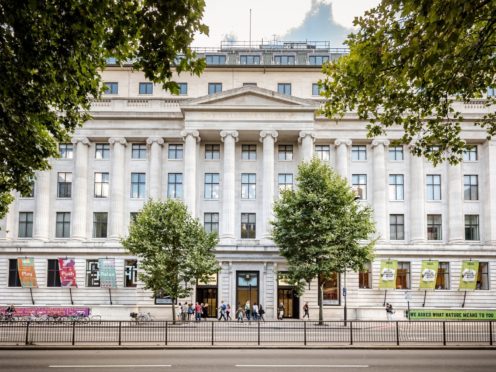A sculpture evoking the smell of breast milk is on display in a new gallery exploring what it means to be human.
Curators have looked at the human condition in the 21st century, tackling “genetics, minds and bodies, infection and environmental breakdown”.
Some of the 50 artworks on display at the Wellcome Collection are experienced by smell.

They include a piece which uses sequenced DNA to “suggest the smell of extinct plants” from pressed 19th century specimens.
A bronze and perfume sculpture by food historian and artist Tasha Marks “suggests the smell of breast milk and celebrates … our symbiotic relationship with bacteria”.
The permanent gallery, Being Human, also includes a tank of zebrafish, a species with which humans share 70% of genes, curators said.
Also on display is Refugee Astronaut, a new commission by artist Yinka Shonibare.

The life-sized sculpture of an astronaut wears a suit made from fabric inspired by traditional Nigerian patterns and reflects on themes of “climate change, identity, colonialism and globalisation”.
Stigma relating to HIV is explored in Basse Stittgen’s Blood Objects series – the “small objects are made from HIV-positive blood, shown alongside the stories of each donor”.

Curator Claire Barlow said: “Being Human explores our thoughts and feelings about health, our identities, relationships and our impact on the changing environment.
“Our understanding of what it means to be human is being transformed not only by new research but also by the voices of those with diverse identities and experience. Bringing together these objects reveals how we are all different, we are all valuable and we are all connected.”
The gallery, in London’s Wellcome Collection, has been designed by Turner Prize-winning arts and architecture collective Assemble, with Kellenberger-White.
